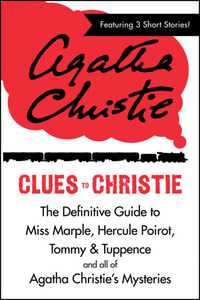Published by HarperCollinsPublishers Ltd
1 London Bridge Street
London SE1 9GF
www.harpercollins.co.uk
This 80th anniversary edition published by HarperCollinsPublishers 2011
First published in Great Britain by Hodder & Stoughton 1931
THE FLOATING ADMIRAL. Copyright © The Detection Club 1931, 2011. All rights reserved under International and Pan-American Copyright Conventions. By payment of the required fees, you have been granted the non-exclusive, non-transferable right to access and read the text of this e-book on-screen. No part of this text may be reproduced, transmitted, down-loaded, decompiled, reverse engineered, or stored in or introduced into any information storage and retrieval system, in any form or by any means, whether electronic or mechanical, now known or hereinafter invented, without the express written permission of HarperCollins e-books.
EPub Edition © MARCH 2011 ISBN: 9780007414451
Version: 2017-04-13
Copyright
Map
Foreword
By Simon Brett
Introduction
By Dorothy L. Sayers
Prologue
“The Three Pipe Dreams”
By G. K. Chesterton
Chapter I
Corpse Ahoy!
By Canon Victor L. Whitechurch
Chapter II
Breaking the News
By G. D. H. and M. Cole
Chapter III
Bright thoughts on Tides
By Henry Wade
Chapter IV
Mainly Conversation
By Agatha Christie
Chapter V
Inspector Rudge begins to form a Theory
By John Rhode
Chapter VI
Inspector Rudge Thinks Better of It
By Milward Kennedy
Chapter VII
Shocks for the Inspector
By Dorothy L. Sayers
Chapter VIII
Thirty-Nine Articles of Doubt
By Ronald A. Knox
Chapter IX
The Visitor in the Night
By Freeman Wills Crofts
Chapter X
The Bathroom Basin
By Edgar Jepson
Chapter XI
At the Vicarage
By Clemence Dane
Chapter XII
Clearing up the Mess
By Anthony Berkeley
Appendix I
Solutions
Appendix II
Notes on Mooring of Boat
Counsel’s Opinion On Fitzgerald’s Will
About the Publisher
Map
By Simon Brett
PRESIDENT OF THE DETECTION CLUB 2001–
IT is appropriate that the origins of the Detection Club are shrouded in mystery. No official archives for the organisation have ever been kept and so its history has to be pieced together from the memoirs, correspondence, hints and recollections of its members. One reason for this incomplete record may be that the Club originally prided itself on being a kind of secret society, with rituals known only to its initiates. In the days of the internet, however, such a level of security is impossible. Indeed, an extract from the Detection Club’s most secret rite, the Initiation of New Members, is readily accessible on Wikipedia.
So the Club’s history is, at the best, conjectural. One authority declares that it was founded in 1932 with 26 members, but this assertion is somewhat weakened by the fact that a letter was published in the Times Literary Supplement in 1930 and signed by “members of the Detection Club”. And the serials The Scoop and Behind the Screen appeared in The Listener respectively in 1930 and 1931. They were written by multiple authors, including Agatha Christie, Dorothy L. Sayers, E. C. Bentley and Anthony Berkeley, under the name of the Detection Club, as was this work, The Floating Admiral, whose copyright notice on the first edition reads: “The Detection Club 1931”.
So a more likely prehistory of the Club was that round about 1928 Anthony Berkeley Cox (who only used his first two names on his books) and other detective writers started to meet for informal dinners, which then became more established into the rituals of a Club. According to some sources, G. K. Chesterton was appointed the first President—though sometimes referred to as “Leader”—in 1930. Mind you, other authorities say that he didn’t take over the Presidential mantle until 1932. Even the Detection Club itself is inconsistent about the date. On its headed notepaper is stated that Chesterton’s reign began in 1932, whereas in the List of Members it says 1930. So you can really take your pick.
What is certain, however, is that, on 11 March 1932 the “Constitution and Rules of the Detection Club” were adopted. The opening section of this document reads: “The Detection Club is instituted for the association of writers of detective-novels and for promoting and continuing a mutual interest and fellowship between them.” Members had to fulfil “the following condition: That he or she has written at least two detective-novels of admitted merit or (in exceptional cases) one such novel; it being understood that the term ‘detective-novel’ does not include adventure-stories or ‘thrillers’ or stories in which the detection is not the main interest, and that it is a demerit in a detective-novel if the author does not ‘play fair by the reader’.”
In this 1932 Constitution, the Ordinary Meetings of the Club should be “not fewer than four in the year”, so things haven’t changed that much. In 2010—and for many years before that—the Detection Club met three times.














